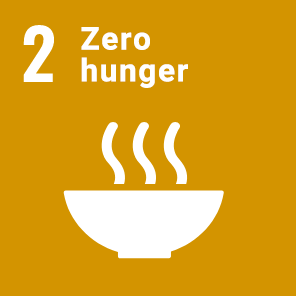ENVIRONMENTALLY FRIENDLY PRODUCT CREATION

We strive to develop environmentally friendly products. SAQ™ helps conserve forest resources. Succinic acid is used as a raw material to make biodegradable earth-friendly plastics. MAXIMOL® foams urethane with water instead of CFC. Sobis™ reduces and detoxifies chromic acid wastewater. Calcium acetate monohydrate and crystalline sodium acetate are used as a carboxylic acid-based anti-freezing agents that don’t cause salt damage. Sodium thiosulfate is used as a ballast water treatment agent. Finally, shelf-life enhancers contribute to the reduction of food loss.
“SAQ™,” helping to conserve forest resources

Paper products, an essential part of our daily lives, are made using pulp fiber extracted from wood as the primary raw material. The process of treating wood with alkali chemicals at a high temperature and removing unneeded components to efficiently require only the pulp fiber is known as the pulp cooking process.
Our pulp cooking additive, SAQ™, is used as a reaction accelerator in this pulp cooking process that many paper mills use to produce pulp. SAQ™ improves the yield of pulp fiber extracted from wood, reducing the amount of alkali chemicals used and lowering the cooking temperature, making it a nature-friendly product that saves raw wood and fossil fuels.
“Succinic acid,” a biodegradable raw material for earth-friendly plastics



Biodegradable resins can be used in the same way as regular plastics, but after use, they are eaten, excreted and ultimately decomposed by microorganisms in the natural world into water and carbon dioxide, thus making them a resin with a low environmental impact. They have a low combustion value even when incinerated, and are characterized by their ability to suppress the generation of toxic substances such as dioxins.
A portion of the succinic acid that we produce is used as a raw material for this environmentally-friendly resin.
“MAXIMOL®,” foams urethane with no CFCs/water



MAXIMOL® is the main raw material for rigid polyurethane foam in which no CFCs have been used.Used as insulation in houses and refrigerators, the excellent flame retardancy and insulating properties of this product contribute to energy conservation and the reduction of CO2 emissions.We are working on product development while aiming for the realization of a sustainable society.
“Sobis™,” a chromic acid liquid waste treatment agent

Waste liquids from metal plating plants contain toxic hexavalent chromium such as chromate or dichromate, which cannot be simply discharged and must be treated. Unlike other heavy metals, this extremely toxic hexavalent chromium does not turn into hydroxide. Thus, it can’t be simply precipitated and separated.
For this reason, a reducing agent is used to turn hexavalent chromium into trivalent chromium. This trivalent chromium can be precipitated and removed as chromium hydroxide through the addition of an alkaline agent, similar to other heavy metals.
Our Sobis™ has superior solubility as a reducing agent, only requires a small amount and produces little sludge after treatment.
Calcium acetate monohydrate and crystalline sodium acetate, anti-freezing agents that don’t cause salt damage

Salt damage from common chloride anti-freezing agents causes problems such as the rusting of reinforcing bars in concrete structures, RC bridge floor plates and steel bridges, guard rails and automobiles. They also have negative effects on plants, rice paddies, fields, swamps, and lakes in the surrounding areas.
For this reason, our potassium acetate and crystalline sodium acetate are used as carboxylic acid-based anti-freezing agents that do not cause salt damage.
“Shelf-life enhancers,” reducing food loss



Shelf-life enhancers extend the shelf life of food and reduce the chances of disposal.
We have a large lineup of food performance materials that are used as raw materials for shelf-life enhancers. We offer sodium acetate (anhydrous), which has superior bacteriostatic function; “Sanmi Ace™,” which is characterized by a sharp acidity; “CAL-FRESH™” (calcium acetate monohydrate), which has structure-strengthening and bacteriostatic functions, and “Adipic Acid,” which inhibits the growth of bacteria and has refreshing acidity, thereby contributing to the reduction of food loss.
Sodium thiosulfate, neutralizing chlorine by ballast water treatment

Ballast water is seawater that is stored in ballast water tanks for weight to maintain the stability of the ship. During ballast water discharge, if organisms contained in the ballast water are discharged in areas that are not their natural habitat, it can affect the ecosystem.
To resolve this issue, the International Maritime Organization (IMO) adopted the International Convention for the Control and Management of Ships’ Ballast Water and Sediments in 2004, which came into effect in September 2017. Our sodium thiosulfate has been used as a reducing agent during the discharge of ballast water that has been chlorinated in a treatment system into the sea since the convention came into effect.

